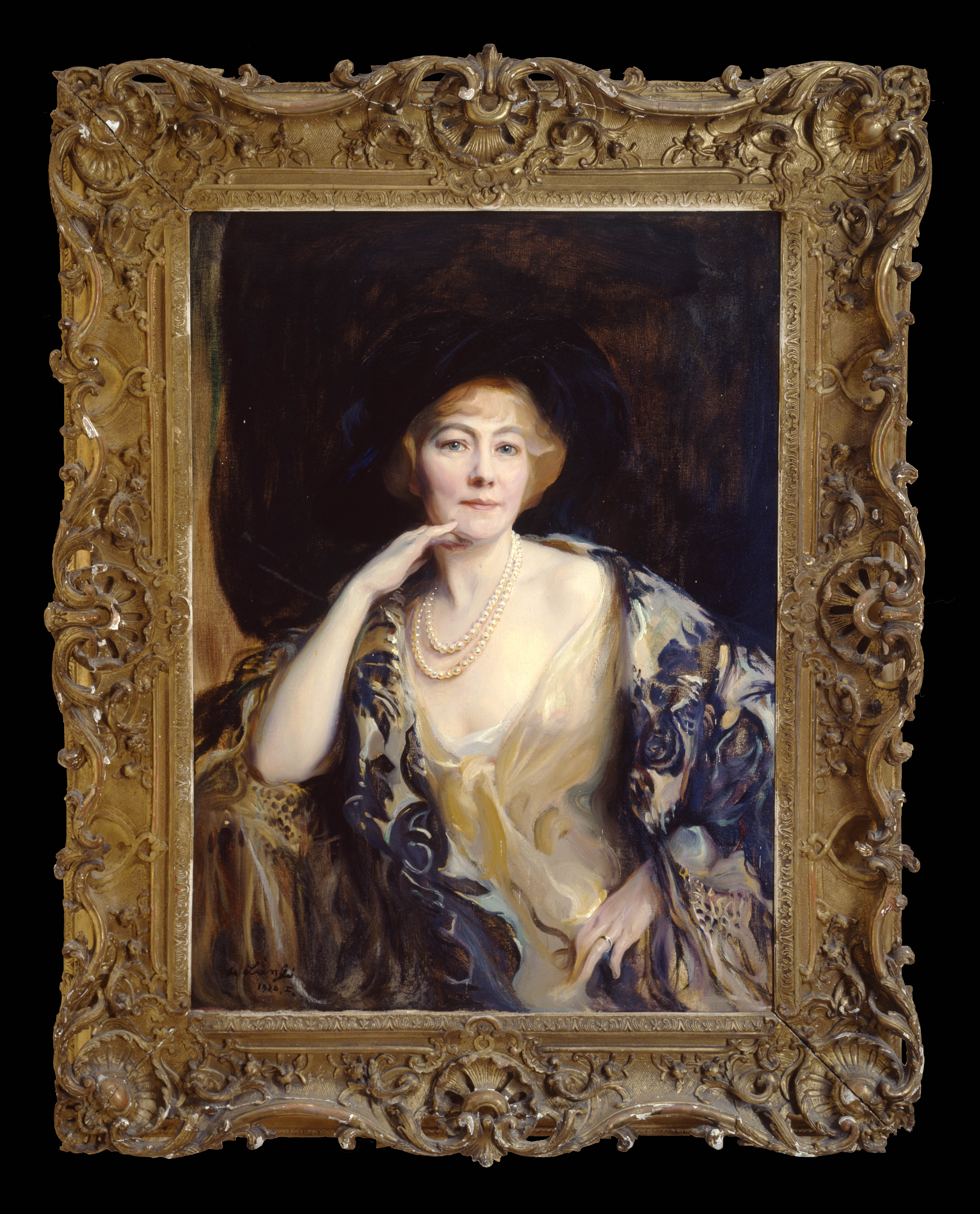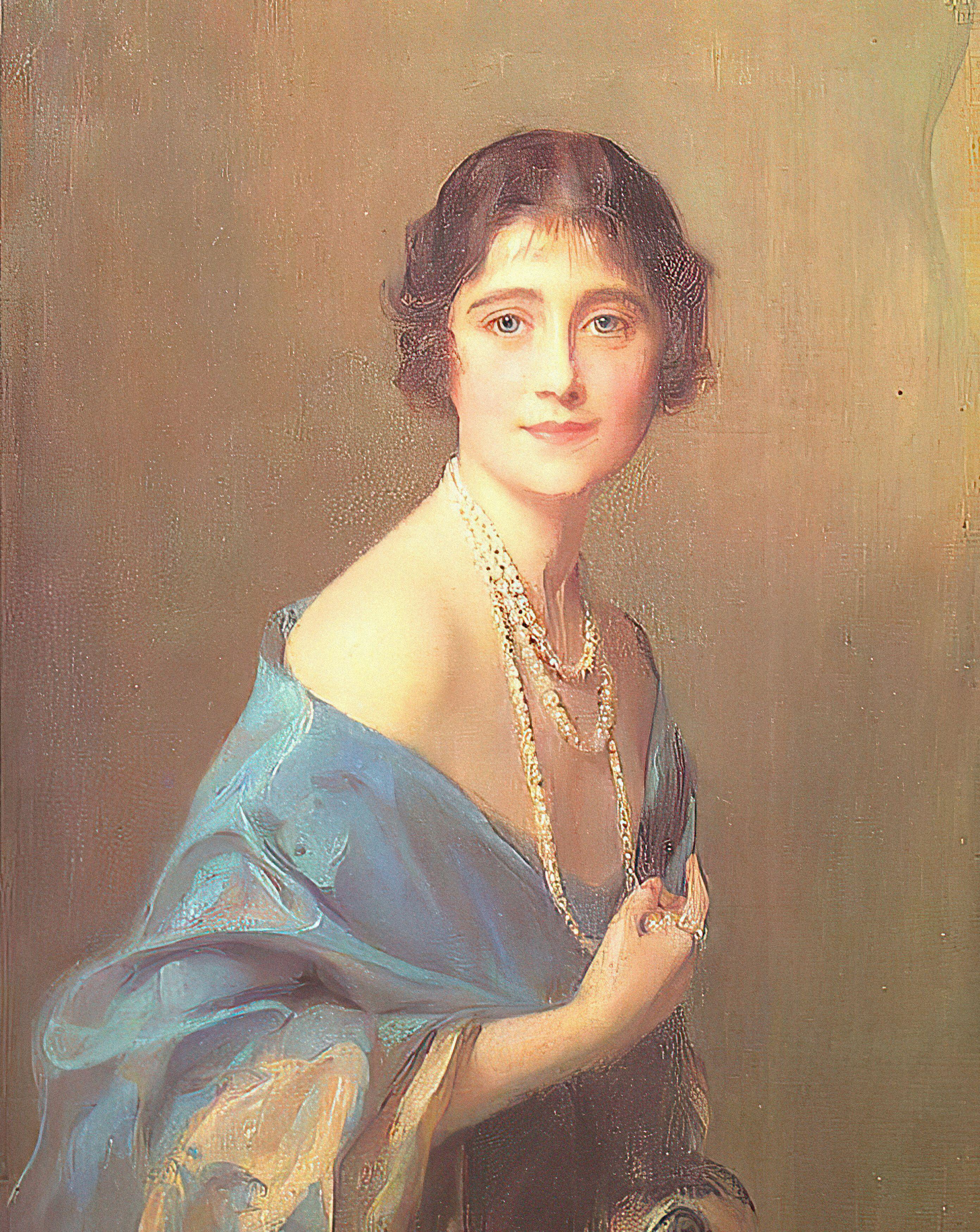A portrait featuring a string of pearls stolen in one of Britain’s most notorious jewellery heists is going under the hammer
A portrait by Philip de László features a headline-making pearl necklace that was stolen, recovered and stolen again — and it's coming up for auction this week.


Philip de László was Society’s portrait artist of choice in the early 20th century, famed for his abilities to accurately depict fabulous jewelers. He painted: Queen Marie of Romania wearing an incredible Cartier sapphire and diamond tiara; Winifred, wife of the 6th Duke of Portland in the same tiara that she had worn to the coronation of Edward VII and Alexandra; and, most memorably, American heiress Evalyn Walsh Mclean, who dazzled in the legendary 45.5 carat Hope Diamond and the equally magnificent Star of the East diamond.
This week, a portrait by the Anglo-Hungarian artist, featuring a double strand, headline-making necklace that was stolen, recovered and stolen again, will go under the hammer.
‘He’s arguably one of the very best painters of jewellery. You can easily identify a sitter’s jewels, and exactly what they’re made of, when you look at one of his portraits,’ says Katherine Field, senior editor of the Philip de László Catalogue Raisonné, the authoritative record of the artist’s works. ‘Of course, it came with the territory of painting the royal families, aristocrats and industrialists of the day. For women who couldn’t show off military finery or medals, jewellery was how they signalled their wealth and status at the time. Unlike fashionable clothes, they also couldn’t ‘date’ a portrait to any specific year, giving de László’s paintings an air of timelessness, which he preferred.’

Philip de László (1869-1937) was one of the most celebrated and successful portrait painters of his generation. His many sitters included European royalty — including the then Duchess of York (1925) — aristocrats and society figures, as well as members of his own family.
Of all the jewels that de László illustrated during his career, perhaps none are more alluring, or mysterious, than pearls. A metaphor of femininity, purity and integrity for millennia, they feature in no less than 300 of de László’s portraits — and he was highly aware of both their rich symbolism and enormous value as status symbols. Indeed, it’s no accident that in 1925 he depicted them draped around the neck of a young Duchess of York (later the Queen Mother) who was embarking on her career as a member of the Royal Family.
‘Sourced from the Persian Gulf, and in some cases from the Americas, natural pearls were inordinately expensive at the time, before cultured pearls had made their way to Europe from Japan,’ says Vivienne Becker, jewellery writer and historian. ‘Their beguiling lustre, which didn’t need polishing, their link to ancient mythology and their fabulous rarity ensured they were madly sought after. For centuries, they were the ultimate expression of rank, success and style. Think of the portraits of Elizabeth I draped in ropes of pearls.’ They were so valuable in the early 20th century, Vivienne adds, that their prices were quoted in daily newspapers and in personal wills, much like that of bullion.

Isabel ‘Bella’ MacConnell lived a life of luxury
De László’s most mysterious pearls are double string blush-pink ones which, in January 1921, were worn for a portrait sitting by Mrs Harold Nickols — the wife of a wealthy English businessman and philanthropist. Born Isabel ‘Bella’ MacConnell in Dublin, in 1878, she wed Harold in July 1908 and lived a lavish lifestyle of couture-filled wardrobes and finely decorated rooms. Her flawless pearls — gifted to her by her husband — included a central gem rumoured to have once been part of the Portuguese crown jewels.
Before they ringed the neck of Bella, the precious pearls had made headlines for their starring role in a jewellery heist. Their original owner was Max Meyer, one of Hatton Garden’s most respected gem dealers, who, in 1913, sent the necklace (then on a single strand and nicknamed the ‘Mona Lisa of necklaces’) to a colleague in Paris, France for appraisal. The jewels were valued at £135,000 (about £20 million in today’s money), but the sale fell through and so they were returned to London by registered post. ‘This was fairly common practice at the time,’ says Vivian Watson, author and third-generation Hatton Garden jeweller. ‘Even the priceless Cullinan diamond was sent to England from South Africa this way, with a security firm acting as a decoy to lure would-be criminals away from the mail.’
Exquisite houses, the beauty of Nature, and how to get the most from your life, straight to your inbox.
Unfortunately for Meyer, his parcel was intercepted by criminals, masterminded by a renowned jewel thief called Joseph Grizzard, who replaced the pearls with sugar lumps. A lengthy investigation by Scotland Yard, aided by underwriters from Lloyd’s, who had insured the jewel for a vast sum, ended in a sting operation and Grizzard’s eventual arrest in September 1913 — though the pearls themselves were only recovered two weeks later by a pedestrian in Highbury (in a matchbox in the gutter).
‘Thankfully no one was hurt in the heist, and Meyer’s reputation as a first-rate pearl dealer remained intact, but it’s definitely the stuff that movies are made of,’ says Vivian.
Unfortunately, the pearls suffered another traumatic adventure with a less than happy movie ending. In 1965, when Bella was 87 years old, her flat was burgled and her beloved pearl necklace stolen. Again. Never to be recovered. On Wednesday (October 29), de László’s beguiling portrait of her will be auctioned off by Dreweatts, once more thrusting its wealthy subject — and the unfortunate story of her precious pearls — into the international spotlight. ‘One can’t help but wonder if those pearls are still out there,’ says Vivian. ‘Perhaps they’ll turn up at auction themselves one day.’
Kim Parker is a London-based journalist specialising in jewellery, fashion, and watches. She has more than 20 years’ experience in the luxury industry and, alongside Country Life, has written extensively for titles such as Harper’s Bazaar, Town & Country, The Times, and The Telegraph. When she’s not researching the latest and greatest jewellery finds, she’s happiest on horseback.
